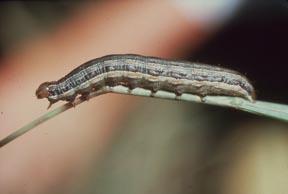When it comes to stating his opinion on matters of pest management, Dave Shetlar, Ph.D., never has been one for mixing words. That was evident when the Ohio State entomologist conducted a seminar on environmentally responsible pest management at the recent Ohio Turfgrass Foundation Conference and Show.
Like many in the audience, Shetlar found the title of his own presentation as nebulous as trying to wrap your hands around a cloud, and he jokingly laid some of the responsibility with a colleague who assigned him with the topic.
 "I don't know where John Street comes up with these titles. He gave me the title Environmentally Responsible Insect Management in Today's World," Shetlar said. "I have my own ideas what environmentally responsible means, but I suspect if we polled everybody in this room we probably would get 100 different opinions on what environmentally responsible is. What is environmentally responsible? A lot of my colleagues would say low-impact. What the heck does that mean?"
"I don't know where John Street comes up with these titles. He gave me the title Environmentally Responsible Insect Management in Today's World," Shetlar said. "I have my own ideas what environmentally responsible means, but I suspect if we polled everybody in this room we probably would get 100 different opinions on what environmentally responsible is. What is environmentally responsible? A lot of my colleagues would say low-impact. What the heck does that mean?"
In the world of professional turf management, environmentally responsible is synonymous with another hard-to-define term sustainability.
"Sustainability. I love that one," Shetlar said. "The real technical definition of sustainability is 'an environment that will continue to maintain itself indefinitely.' "
By that definition, sustainability is nearly impossible to achieve in an environment populated and affected by people, "but we can move toward sustainability while still controlling pests, Shetlar said.
For turfgrass managers, one method of moving toward sustainability is through the use of biological pest controls such as turfgrass varieties that contain endophytes, or fungi that are toxic to some insect pests.
Endophytic tall fescues are ideal for use throughout much of the country in roughs and fairways as well as other turf applications, and can provide natural control of several types of insect pests, including billbugs, chinch bugs, sod webworms, armyworms and aphids.
The endophyte in turfgrass is found in the leaf sheath, not in the root system, so they are ineffective on pests such as white grubs. And there are some pests, such as black cutworms, they can eat endophyte-containing turf without any ill effects.
Acceptable control of insect pests can be accomplished in areas containing 35-40 percent of endophytic turf. And that level of coverage can be achieved through slit seeding one time, Shetlar said. He cited a project in Wooster, Ohio, in which an area seeded once with endophytic turf resulted in 30 percent coverage after seeding and more than 50 percent the following year.
These turfgrasses have other uses as well, and can be a natural deterrent to geese. The endophytes are toxic to geese, and, Shetlar said, will learn to move on to other places that are more hospitable.

